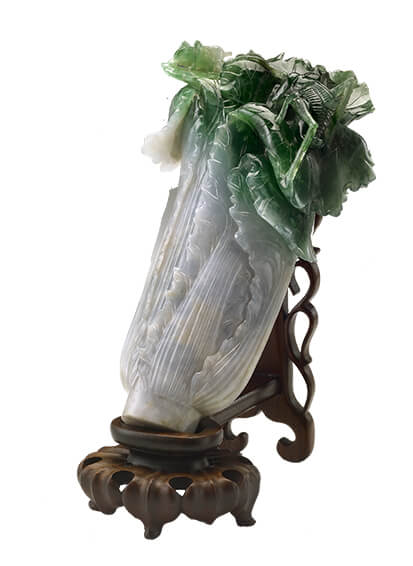Every day for 30 days we will be featuring a museum object that has inspired or intrigued us, in the hope that “an object a day keeps the doctor away.” We love creating exciting, meaningful storytelling through engaging experiences, but still firmly believe that it is hard to beat the thrill of being in the presence of authentic artefacts. Today’s object is: the Jadeite cabbage.

Yes. I queued to see a cabbage. Carved out of jadeite. With insects on it. I had only a few seconds to view it before I was ushered on by the museum attendant. But I must admit it made an impression: something to do with the way that the colours have been so artfully incorporated into the soft flowing leaves. Just over half the size of a ruler, this hard, cold mineral has been carved to look so …. cabbagy.
A star attraction at the National Palace Museum in Taiwan, it was first displayed in the Forbidden City’s Yonghe Palace in 1889. Following the fall of the Qing Empire in the Chinese Revolution of 1911, the sculpture became part of the collection of the Palace Museum in the Forbidden City. Along with a core of that collection, the piece survived the Second Sino-Japanese War (World War II) and the Chinese Civil War and was eventually relocated to Taiwan’s National Palace Museum. Controversy surrounds all of this collection, with the People’s Republic claiming these are national treasures that have been stolen from the Chinese people.
Carved from a piece of half-grayish-white, half-green jadeite, the life-like stalk of bokchoy cabbage has clearly articulated leaves and veins, as well as a locust and its relative, a katydid. The katydid is commonly referred to as a “lady spinner”.
The sculptor is unknown and, in terms of connoisseurship, it is not regarded particularly rare or exquisite. But the people have spoken. And yes you will have to queue to see it.
The National Palace Museum in Taipei is currently running reduced opening hours. Check website for details.
